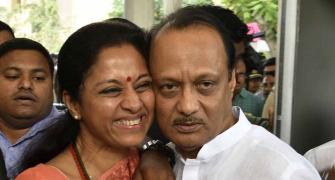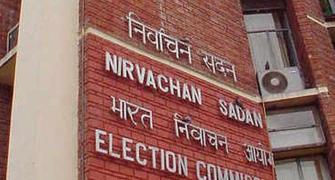Advertising couched as editorial is working best on digital media across the world, says Vanita Kohli-Khandekar.
 Almost every major news website in the world - BuzzFeed, Quartz or Hearst, for instance - gets anywhere between one-third and two-third of its revenues from native advertising.
Almost every major news website in the world - BuzzFeed, Quartz or Hearst, for instance - gets anywhere between one-third and two-third of its revenues from native advertising.
This is true for India as well. For example, ScoopWhoop, a news site popular with young Indians, gets about 80 per cent of its revenues from native advertising.
This is how the Federal Trade Commission (FTC), the consumer protection body in the US, describes it: "Marketers and publishers are using innovative methods to create, format, and deliver digital advertising. One form is 'native advertising', content that bears a similarity to the news, feature articles, product reviews, entertainment, and other material that surround it online. But as native advertising evolves, are consumers able to differentiate advertising from other content?"
They don't, and that is why the FTC had to get in. Here is the backdrop.
Globally, the readership of newspapers and magazines is shifting online. But this shift is difficult to monetise.
Subscription revenues are an exception that specialised brands like Financial Times get, and advertising revenues, the mainstay, are pathetic.
Banner ads, display ads and other formats bring a fraction of the money that a single ad in print does.
Now add smaller screen sizes making for even lower CPMs or cost per mille/thousand, and rising ad avoidance. Many online users have now started using ad blocking software.
It is in this market that, "native advertising is shaping up to be a major part of digital ad growth. These ads -with video now ascendant here (in the US) - blow away first-generation, intrusive digitals and can be less bothersome to readers. They also fetch high-CPM, print-like rates", says Ken Doctor, president of the US-based Newsonomics and an expert on the print industry's digital metamorphosis.
By its very nature, native advertising works by "looking like editorial".
This means using the same style, font, language and design as editorial.
In fact, most websites hire journalism graduates to write the copy for native ads too, because they know how to make it readable or watchable.
As video grows, a lot of the native advertising is coming in video form.
Is this breaking the wall between editorial and advertising?
And if this is all right online, why should mainstream media brands that sell editorial for money or charge to carry party pictures on page 3 be chastised?
It is a question worth asking because these are early, context-setting days for online. And also because the Indian ad market is a buyers' paradise.
Advertisers are a militant, spoilt lot that rarely deal with a strong pushback from publishers or editors.
If native becomes the norm, who and what will protect readers and offer objective, truthful reportage?
Most advertisers and publishers argue that native advertising is no different from the advertorials in print brands.
It accounts for anywhere between three and 10 per cent of the total content. And that as long as there is full disclosure it is fine.
But that is not how it works. Disclosures are rarely prominent or frequent enough. If they were, the ad wouldn't work.
The whole point is to leverage the credulity of the reader and the credibility of the editorial content.
In various studies in the US, readers haven't been able to clearly distinguish between editorial content and native ads.
That explains why The Atlantic, which published a (native ad) piece on the Church of Scientology, had to later apologise for it.
"Any trusted news medium must separate both the production of the ads and how the material is presented," says Doctor. "That's not hard: label it advertising, and not in four-point type. Some publishers have blurred both the production lines and the display lines, and they do that at brand peril."
On the back of an industry-wide debate, in December 2015, the FTC released a detailed list of guidelines, including some clear examples of how disclosures should be made so that consumers are not deceived.
In India, the rather efficient Advertising Standards Council of India has set out basic principles on "honest representation" or "against harmful products and situation".
It also has well-articulated guidelines, and native advertising falls within its remit.
However, while it has received some complaints against native advertising there aren't too many. Maybe because users are not able to understand that these are ads, speculates one analyst.
But here is the googly. Maybe this blurring of lines between editorial and advertising is the price readers pay for not paying for news.









